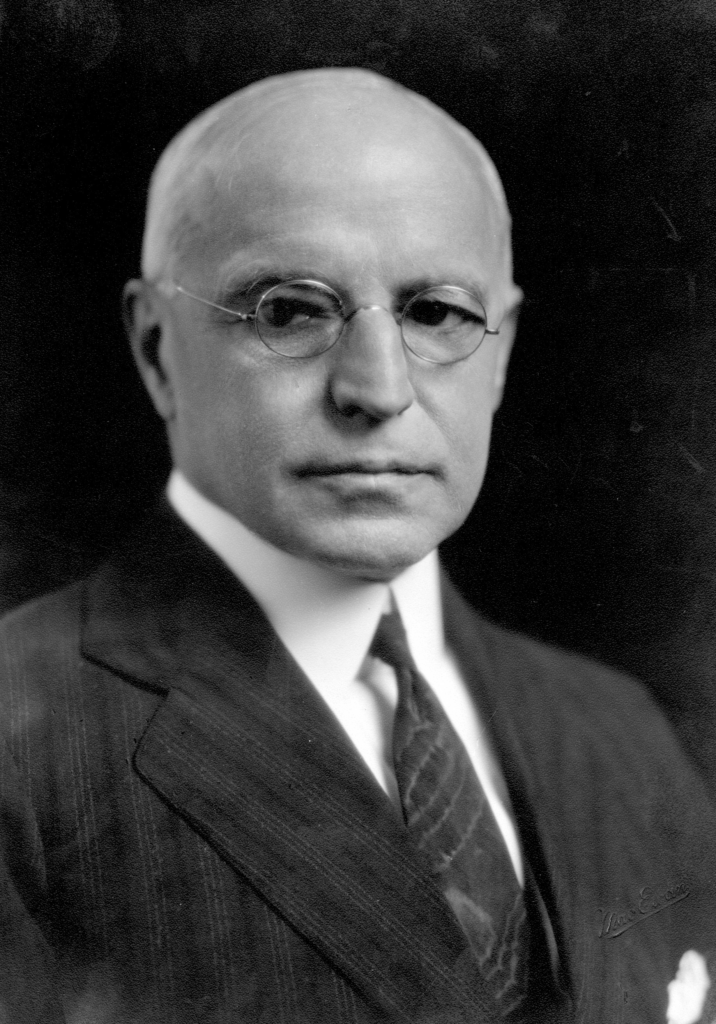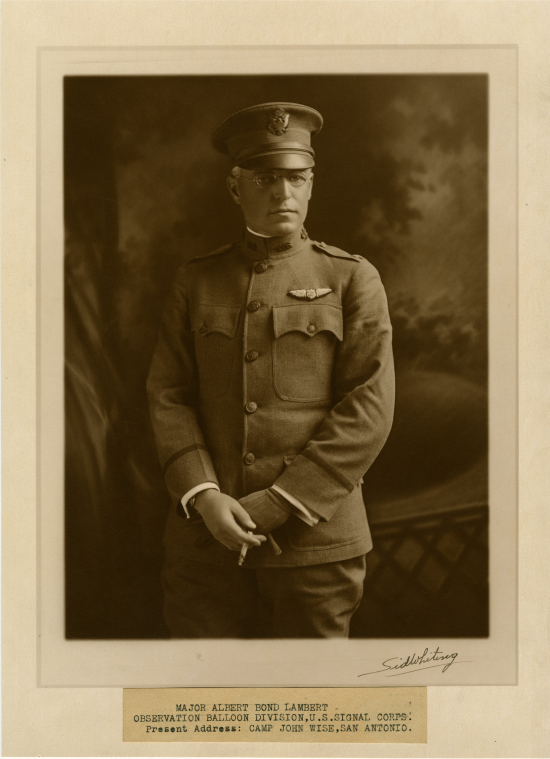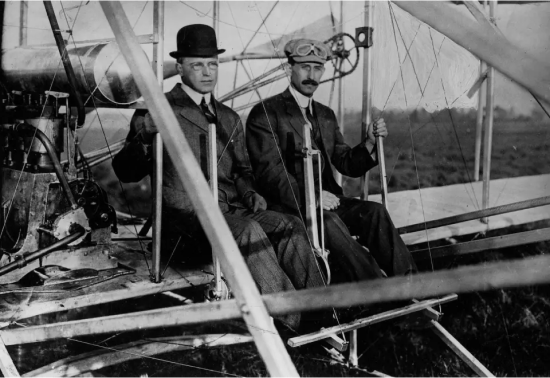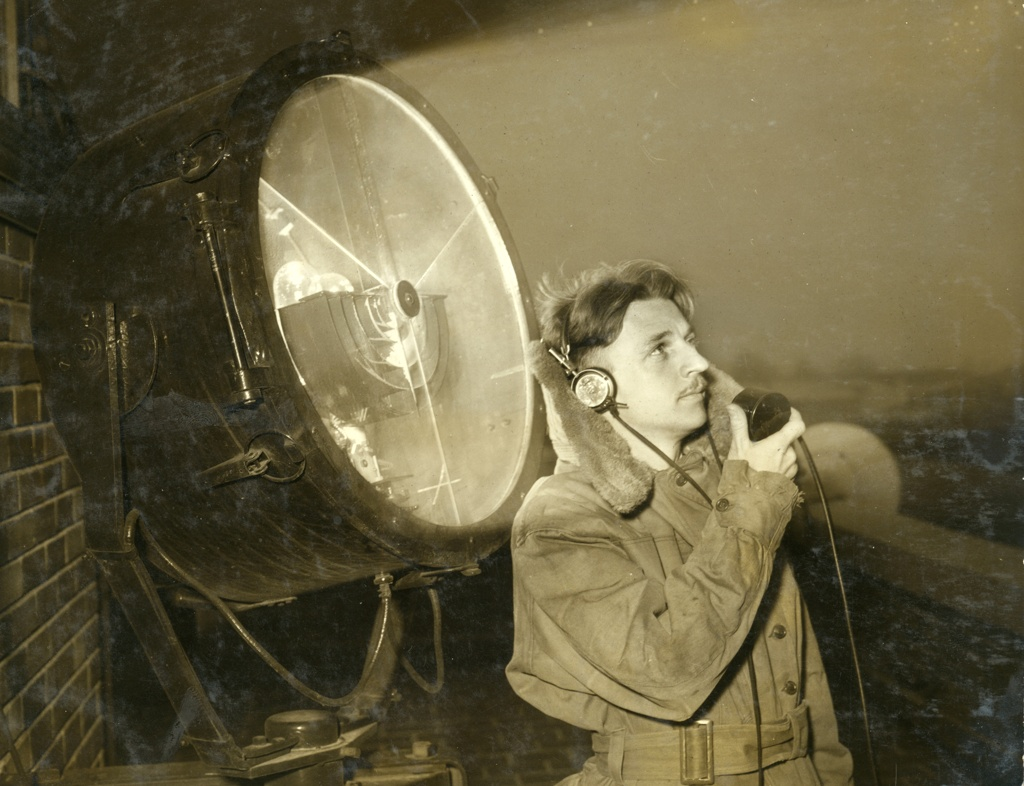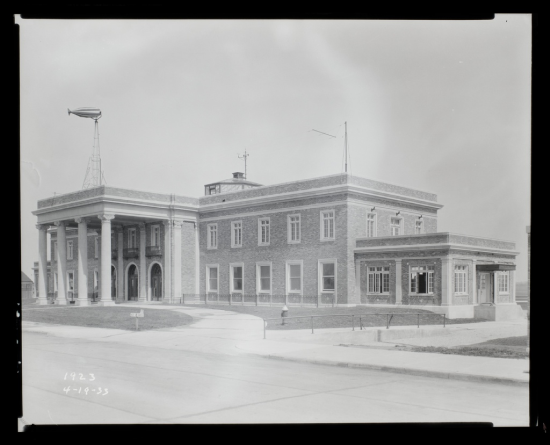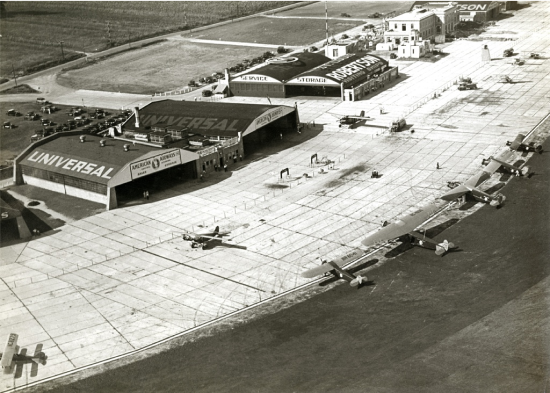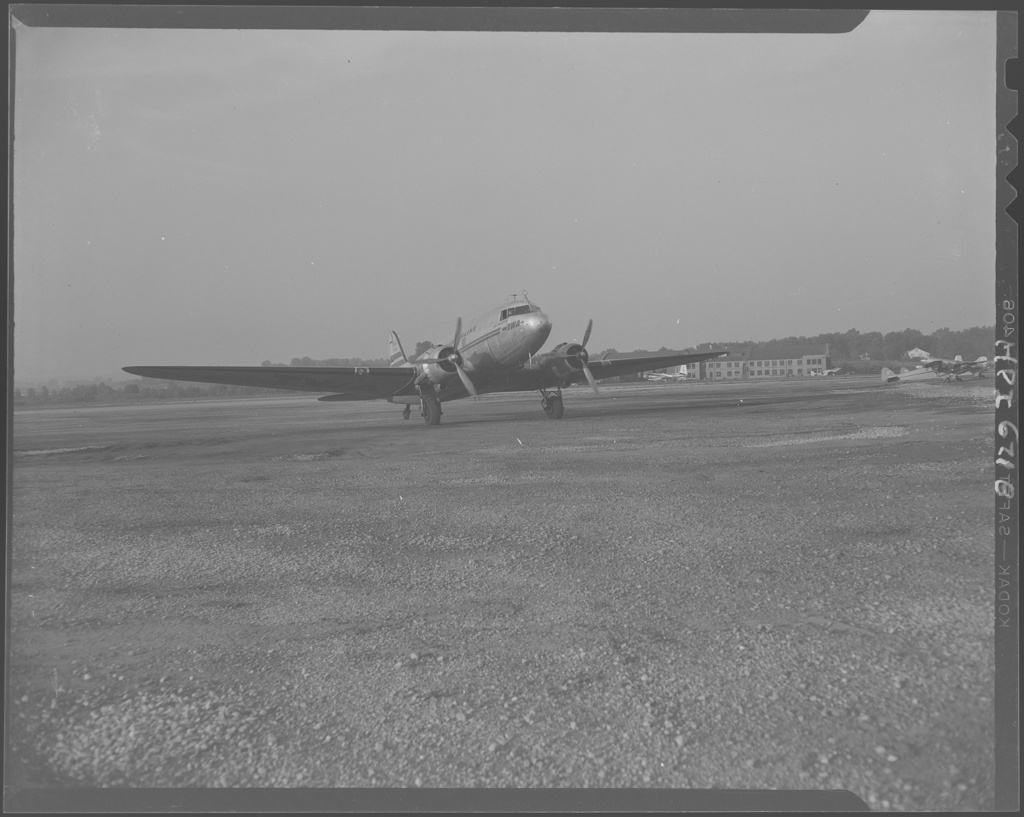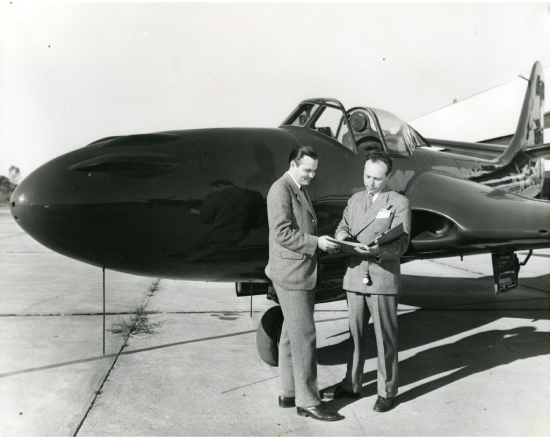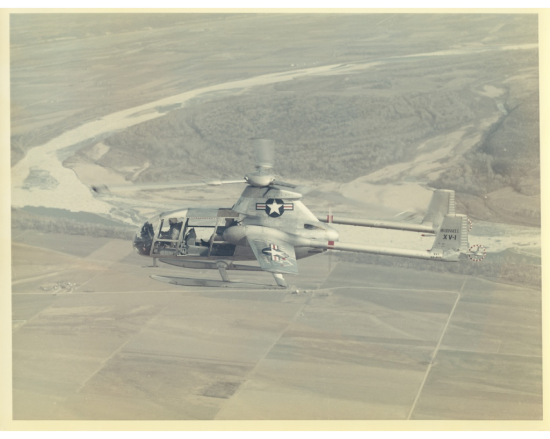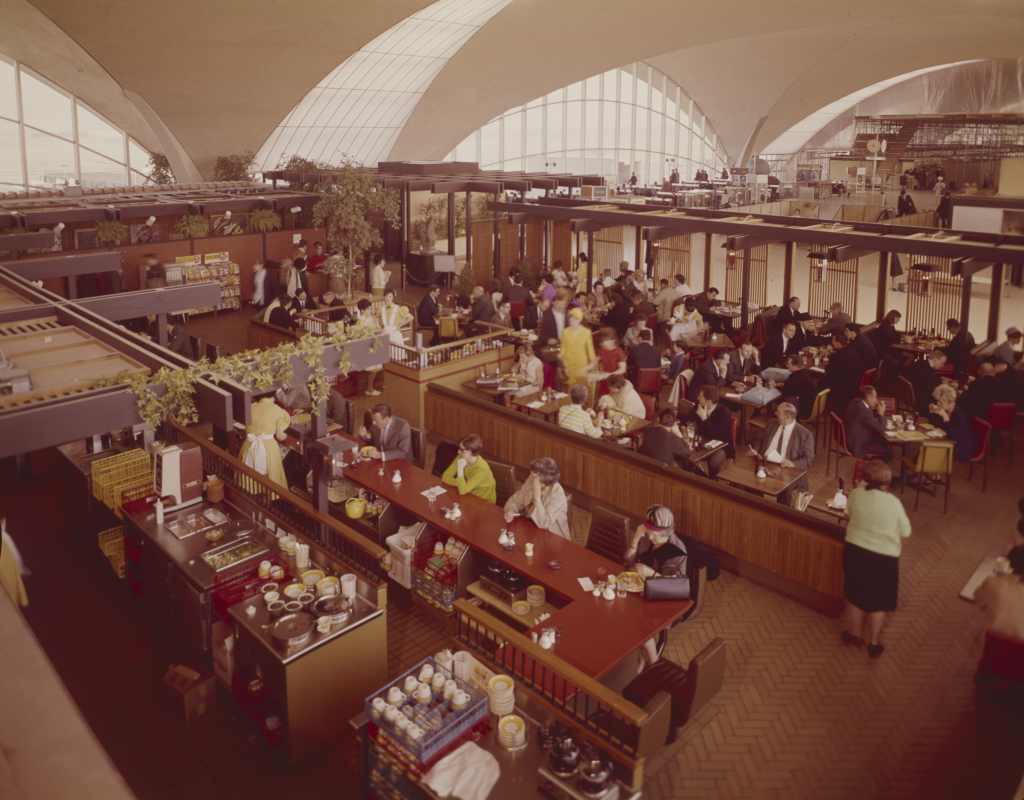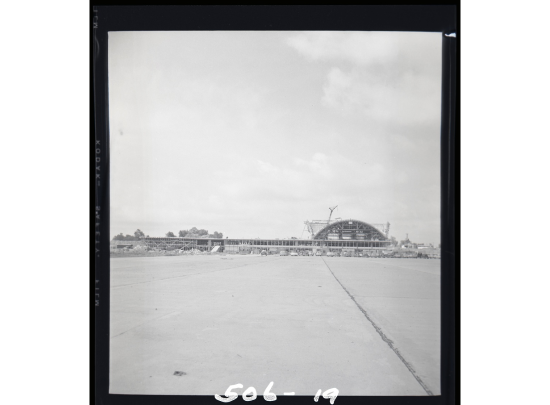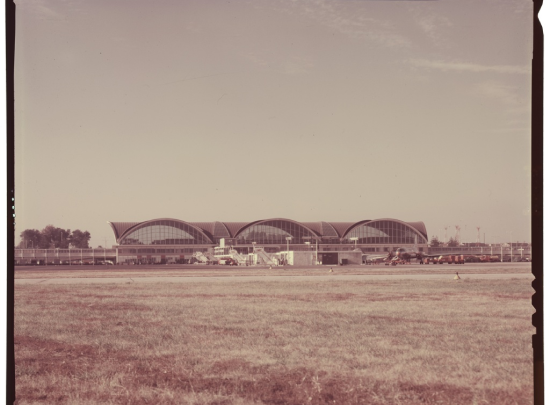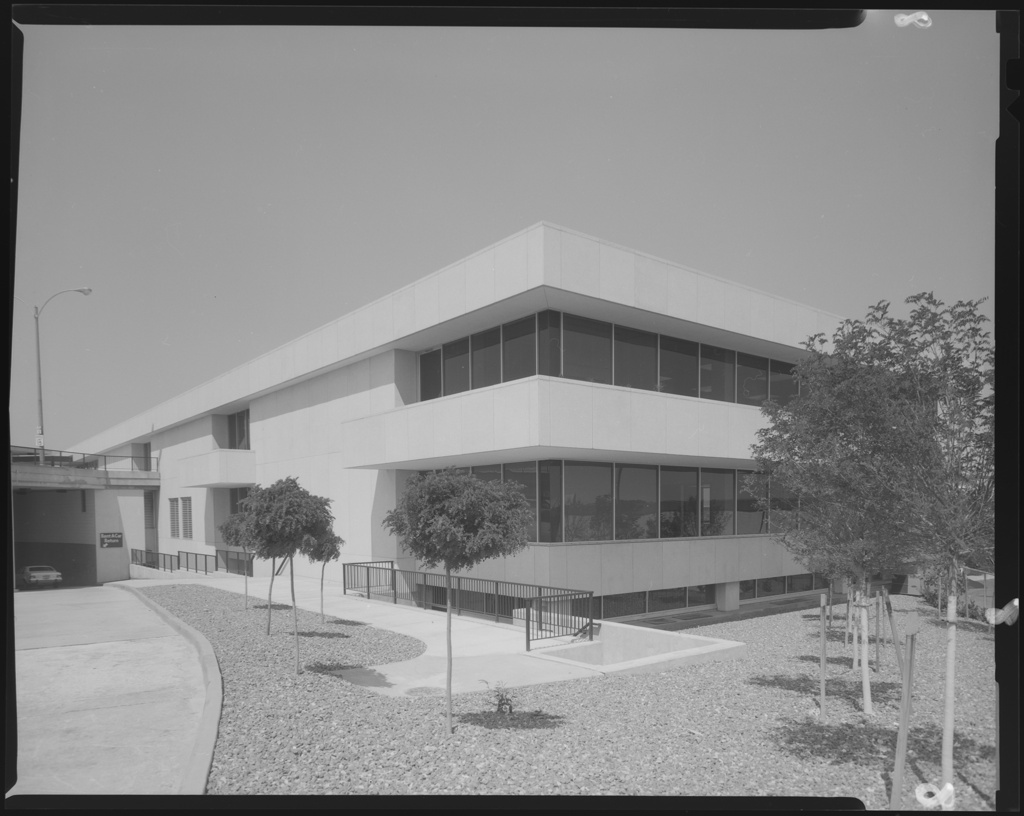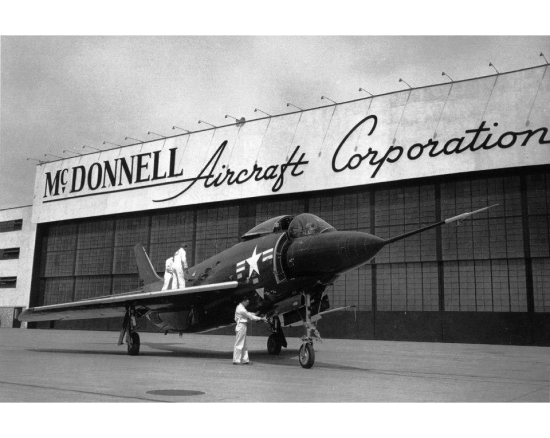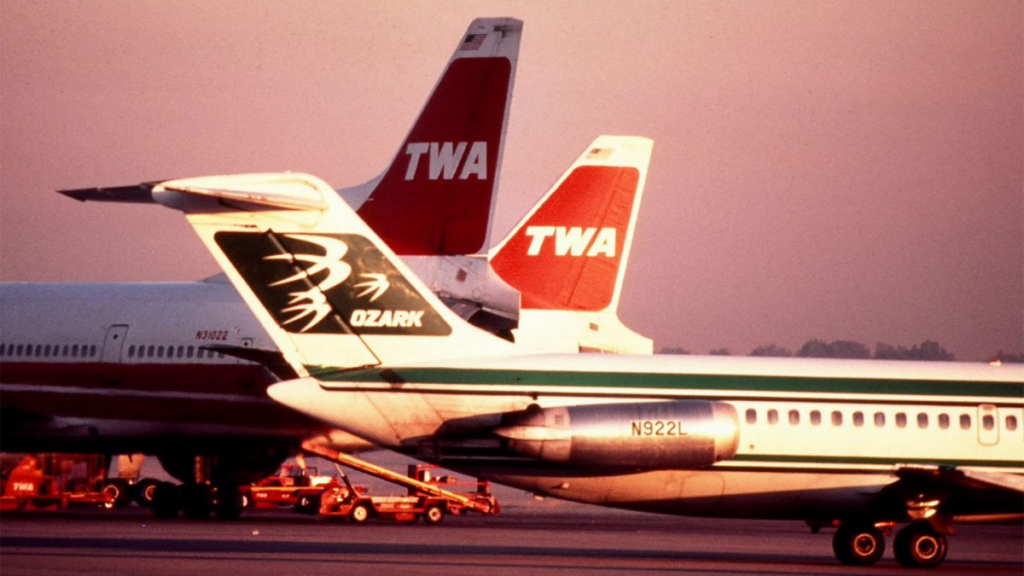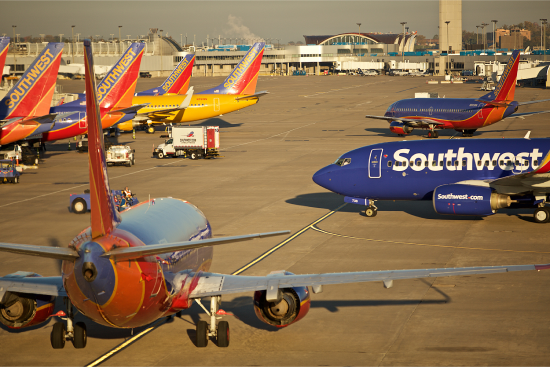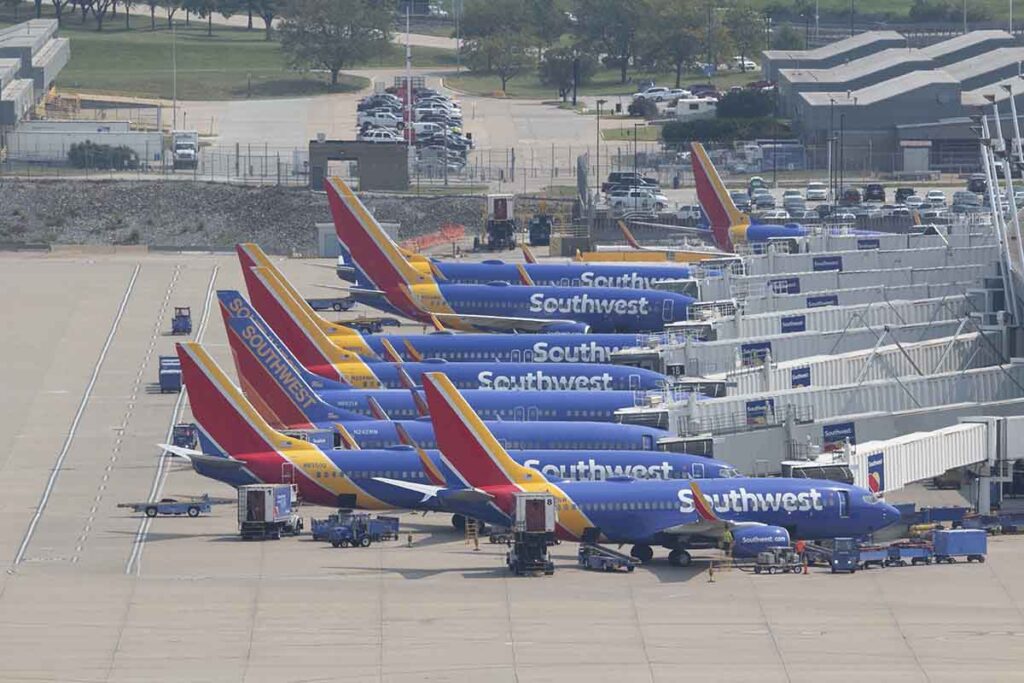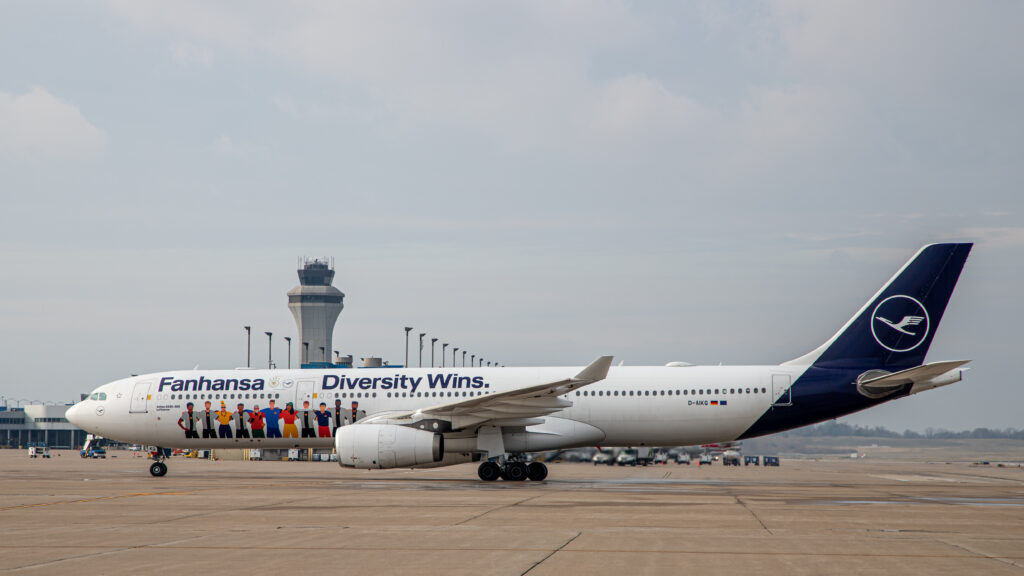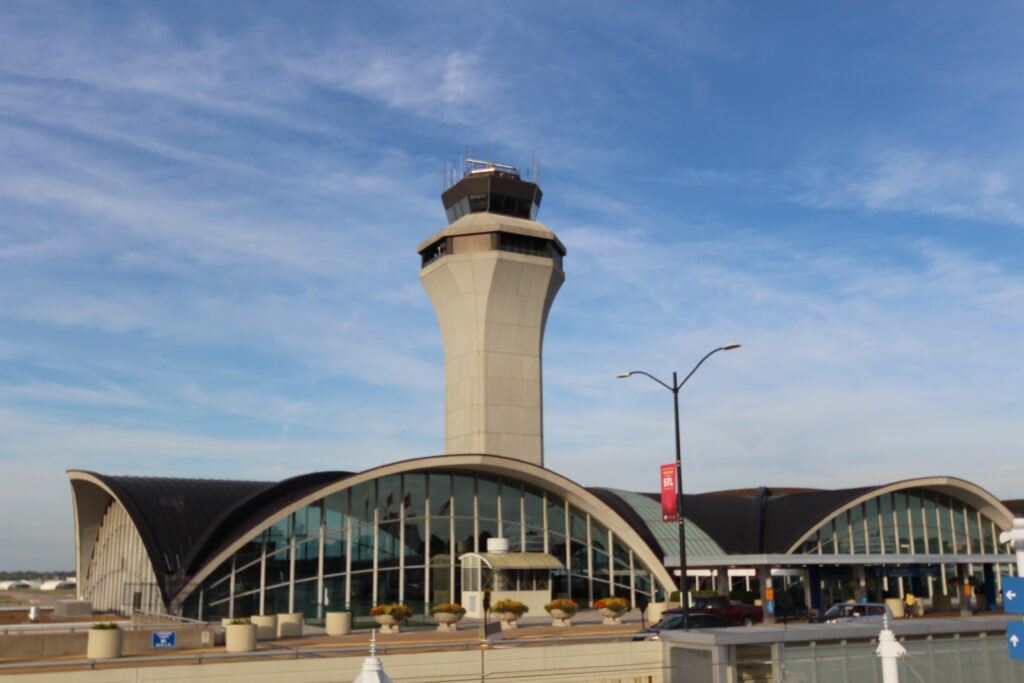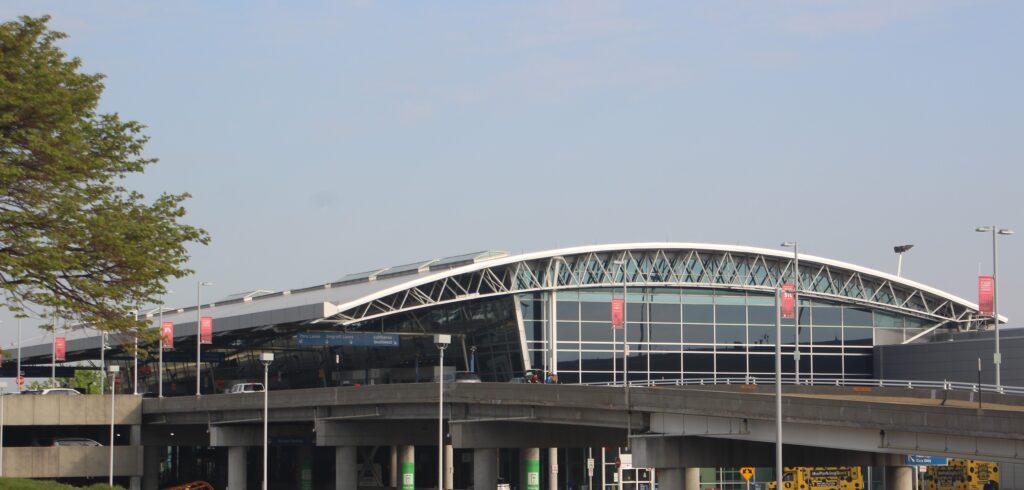“St. Louis Lambert International Airport is one of the most historically significant and earliest municipal airports in the United States. Founded in 1920 by its namesake, Albert Bond Lambert, the airport emerged from a patch of Missouri farmland to become the sprawling international airport it is today. Besides playing a key role from the earliest days of both American Airlines and Trans World Airlines, St. Louis Lambert has also hosted airframe manufacturing since 1928. Tens of thousands of civilian and military airplanes, as well as spacecraft, emerged from factories at Lambert bearing names including Curtiss-Wright, McDonnell-Douglas and Boeing. Lambert Airport was the location of military aviation activity for more than eighty years.
It has also been home to many famous aviators such as Jimmy Doolittle and Charles Lindbergh—best remembered for his seminal 1927 solo flight in The Spirit of St. Louis from New York to Paris. Moreover, the nation’s first air traffic controller got his start directing airplanes at Lambert with a pair of signal flags. Even though these aviation pioneers have long passed, the airport’s iconic terminal designed by world-renowned architect Minoru Yamasaki continues to inspire travelers today as they participate in the unfolding history of St. Louis Lambert International Airport.”
Daniel L. Rust, PhD
Author of The Aerial Crossroads of America: St Louis’s Lambert Airport
Published by the Missouri History Museum Press
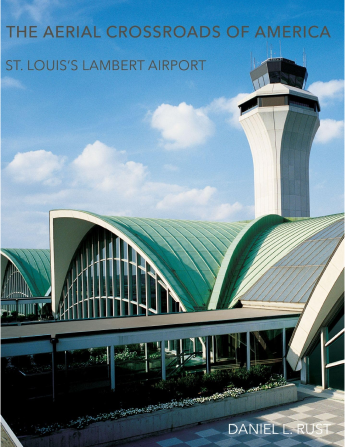
Beginnings…
To say Albert Bond Lambert (1875 -1946) was close to the beginnings of aviation and air travel is an understatement. Lambert learned to fly with the Wright Brothers, received his pilot’s license in 1911, and served in the U.S. Army in World War I, reaching the rank of Major.
In 1920, armed with his passion and plan to build an airfield for St. Louis, Major Lambert and the Missouri Aeronautical Society found themselves on 170 acres of leased farmland in St. Louis County. With the rent paid and the site cleared, Major Lambert had his team get to work, grading and draining the land, as well as building a hangar… and all at his own expense.
Then, Albert Bond Lambert did the unexpected: he offered free use of the field to anyone wishing to use it. Accepting this gracious offer, World War I veterans William and Frank Robertson began operating at what became known as St. Louis Flying Field. From there, in 1923, the Missouri National Guard formed the 110th Observation Squadron at the field, commanded by William Robertson.
Major Lambert was responsible for bringing the 1923 International Air Races to St. Louis, and the airfield was christened “Lambert St. Louis Flying Field” in recognition of his achievements. A young pilot, only twenty-one years old, flew to St. Louis to attend the Air Races, and decided to remain at Lambert as an instructor. His name was Charles Lindbergh.
In 1925, the lease on the land expired, so Major Lambert bought the airfield property. In that same year, the Post Office awarded the contract for airmail service between Chicago and St. Louis to Robertson and hired Charles Lindbergh as the chief pilot. This simple mail route is the earliest incarnation of what is now known as American Airlines.
In between flying the mail, Lindbergh decided to pursue the Orteig Prize, which would be awarded for the first non-stop flight between New York and Paris. Major Lambert and other air-minded St. Louisans agreed to support him. In May, 1927, Charles Lindbergh’s history-making flight became a worldwide sensation, shining light onto aviation.
Today, St. Louis Lambert International Airport is one of the most historic airports in the United States and is named for a man who, throughout his life, worked tirelessly to make St. Louis a leader in aviation.
A Municipal Airport for the City of St. Louis
St. Louis voters approved a $2 million bond issue for airport improvements in August, 1928. The City used the proceeds to buy the property from Major Lambert at his cost, and began extensive land acquisition and improvements, including paved runways, taxiways and apron areas, hangars and support facilities. The Curtiss-Robertson Airplane Manufacturing Company was formed with William Robertson as its President to build the Curtiss Robin light airplane at Lambert. Curtiss-Robertson later became the St. Louis Division of the Curtiss-Wright Airplane Company, which produced a wide range of civil and military aircraft at Lambert during the 1930s.
Lambert was part of the first transcontinental air-rail passenger service inaugurated by Transcontinental Air Transport (TAT) in 1929, with the slogan “Coast to Coast in 48 hours.” During that year St. Louis hired Archie League as the first air traffic controller to direct airplanes landing and taking off at Lambert. He started with signal flags, before progressing to light signals and radio for communications. In 1930 TAT became Transcontinental & Western Airlines (TWA). Lambert’s first passenger terminal was completed in 1933, and served a total of 24,133 passengers during that year.
Lambert During WWII
In 1939 James S. McDonnell formed the McDonnell Aircraft Company at Lambert. With the outbreak of WWII in Europe, the Curtiss-Wright plant at Lambert underwent a $10 million expansion for military production. The City of St. Louis appointed a committee headed by famed pilot Jimmy Doolittle and including Major Lambert, to study needed expansion and improvement of Lambert’s facilities. A new 6,000 foot runway was constructed to handle military requirements, and the United States Navy constructed a Naval Air Station at Lambert to train naval aviation cadets, more than 3,000 of whom would graduate by war’s end.
Although military activity dominated at wartime Lambert, in 1942 St. Louis voters passed a new $4.5 million bond issue for airport expansion to meet anticipated post-war requirements. Major Lambert continued spearheading efforts to gain support for needed improvements until his death in 1946.
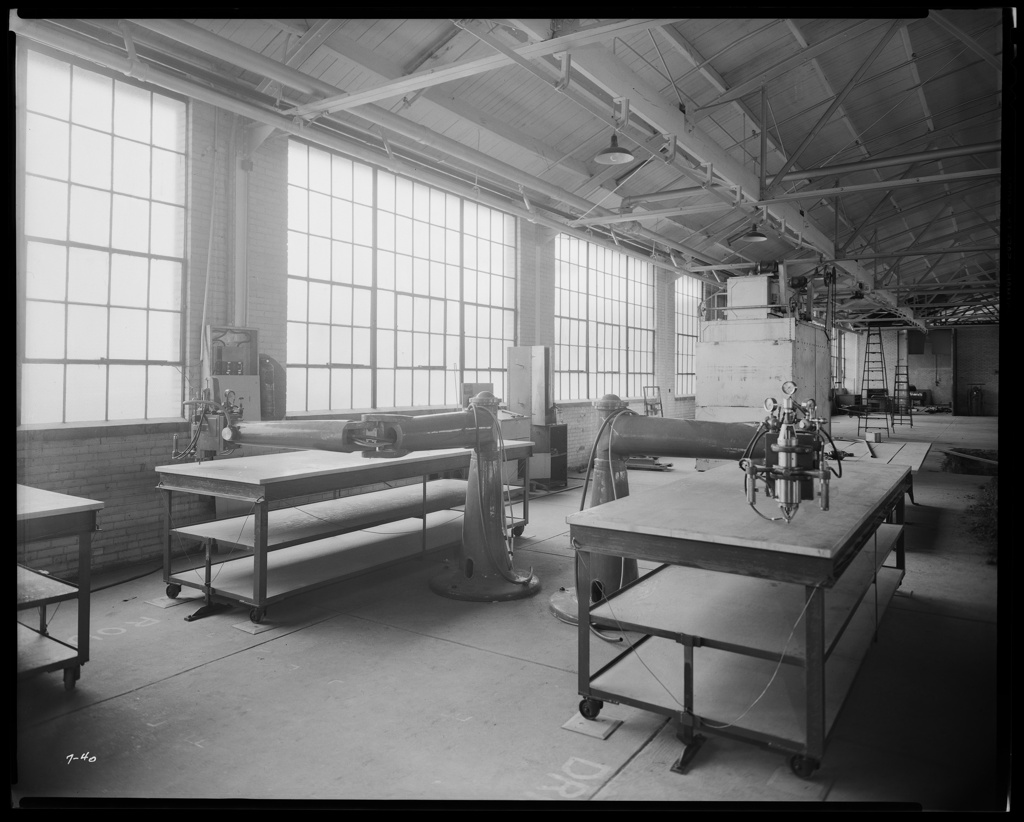
The Post-War Years
McDonnell Aircraft Corporation was awarded the contract to design and produce the Phantom, the Navy’s first jet fighter, which in 1946 became the first American jet to operate from an aircraft carrier. When Curtiss-Wright ended aircraft production after WWII, McDonnell Aircraft took over its former plant at Lambert.
Post-war air travel increased as a new generation of airliners became available. TWA Lockheed Constellations and American Airlines Douglas DC-6’s began serving Lambert. In 1950 Ozark Airlines, a new local service airline, began operations from its headquarters at Lambert.
The Korean War brought increased activity for McDonnell Aircraft, which built F2H Banshee and F3H Demon jet fighters for the Navy and F-101 Voodoos for the Air Force. McDonnell purchased the factory and land at Lambert from the City of St. Louis, which used the proceeds for further airport improvements, including a new 10,000 foot runway capable of handling the coming generation of military aircraft and jet airliners.
The Jet and Space Age
In 1956, Minoru Yamasaki’s iconic arched terminal opened, becoming the forerunner of many modern airline terminals. Its modular design provided for later expansion.
The first McDonnell F-4 Phantom II flew at Lambert in 1958. More than 5,000 F-4s were produced for the U.S. Navy, Air Force and Marine Corps and many foreign nations over the next 20 years.
Lambert became one of the first U.S. airports with jet airline service when Trans World Airlines began operating the groundbreaking Boeing 707 in 1959. As air travel grew rapidly during the 1960s, Lambert added a new parallel runway and expanded the terminal facilities to accommodate the increasing demand.
McDonnell Aircraft was selected by NASA in 1959 to build the Mercury spacecraft at Lambert, in which astronauts Alan Shepard and John Glenn became the first American astronauts in space and in orbit. Following the successful Mercury program, NASA chose McDonnell to build the two-man Gemini spacecraft, which pioneered rendezvous and docking in orbit and paved the way for the Apollo missions to the moon. In 1967 McDonnell Aircraft merged with Douglas Aircraft Company to become McDonnell Douglas Corporation.
Challenge and Change
In November, 1971 the airport became Lambert-St. Louis International Airport. TWA began wide body service to Lambert with the Boeing 747 and Lockheed 1011 in 1972, and during the 1970s the Airport terminal and runways were further developed to meet the growing needs of airline passengers and aircraft.
McDonnell Douglas began producing the F-15 Eagle for the U.S. Air Force in 1972 and the FA-18 Hornet for the U.S. Navy in 1978. Both remain in production at Lambert in 2014—records unequalled by any other jet fighter. McDonnell Douglas also produced the unique AV-8B Harrier vertical takeoff and landing jet for the Marine Corps. All three aircraft saw extensive combat action in the Gulf War, Iraq and Afghanistan. The Missouri Air National Guard operated F-4s and F-15s at Lambert, in sight of the plant where they were built.
During this period controversy arose over whether a new airport was needed to replace Lambert. In 1977 the Federal Aviation Administration concluded that Lambert should be expanded and upgraded to meet anticipated future needs.
The Impact of Airline Deregulation
Deregulation of the U.S. airline industry in 1978 brought about great changes by allowing carriers to compete freely over fares and routes. Most airlines adopted a “hub and spoke” approach in response, and in 1982 TWA made Lambert its principal domestic hub.
Terminal expansion continued as Lambert constructed new Concourse D, bringing capacity to 81 gates by 1985. In that year, Southwest Airlines began serving Lambert, and TWA inaugurated non-stop international flights from St. Louis to Paris, London and Frankfurt. TWA acquired Ozark Airlines, which operated coast to coast from Lambert. By 1988, Lambert’s annual passenger traffic exceeded 20 million.
In the late 1980s an obvious need arose for further development of Lambert to alleviate delays, especially in bad weather, and to cope with rapidly increasing passenger traffic. A wide range of plans were proposed and considered, and in 1998 the FAA endorsed the W-1W alternative. The resulting Airport Expansion Program included building a new 9,000-foot parallel runway west of the airport, new taxiways and a tunnel for Lindbergh Boulevard under the runway, re-routing a section of Natural Bridge Road, a new airfield fire station, a new school for the Pattonville School District, and a new fire station for the Robertson Fire Protection District.
Also in 1998 Lambert opened a new 220,000 square foot East Terminal (Terminal 2) to serve the growing service provided by Southwest Airlines. McDonnell Douglas merged with the Boeing Company, which continued to produce F-15s and FA-18s at Lambert for the U.S. Air Force, Navy and Marine Corps, and U.S. allies around the world.
More than 30 million passengers traveled through Lambert in 2000.
The 21st Century
The W-1W Airport Expansion Program took eight years to complete, involving 550 companies at a cost of over $1 billion. It included the acquisition of 2,000 residential and commercial properties, with airfield construction starting in 2001. New runway 11 – 29 opened in April, 2006.
In 2001, American Airlines merged with TWA, uniting two airlines which had served Lambert since their earliest days.
The heightened security measures adopted following 9/11 imposed new burdens on airports, airlines and air travelers. In 2007, the Airport undertook the Airport Experience Program project to upgrade and improve Terminal 1. Work was well advanced when the Good Friday Tornado struck Lambert on April 22, 2011, causing extensive damage. The Airport re-opened the next day, and terminal repairs and upgrades were completed in April, 2012.
St. Louis Lambert International Airport celebrated its 100th anniversary on June 18, 2020. However, the quest to fulfill the aviation vision of Albert Bond Lambert continues. Today, STL is meeting the ever-changing challenges of air travel and the aviation industry with airfield projects, such as the West Airfield Program and the Airfield Maintenance and Central Stores Campus. Future plans include a Consolidated Terminal Program. A plan that will consolidate STL’s two current terminals into one structure with up to 62 gates. Descriptions of these projects can be found in the On-Airport Development section.
More History
Curtiss-Wright Aeroplane Factory
St. Louis to the Stars: An Enduring Aeroplane Factory’s Space Age Journey from Takeoff to the Cosmos


